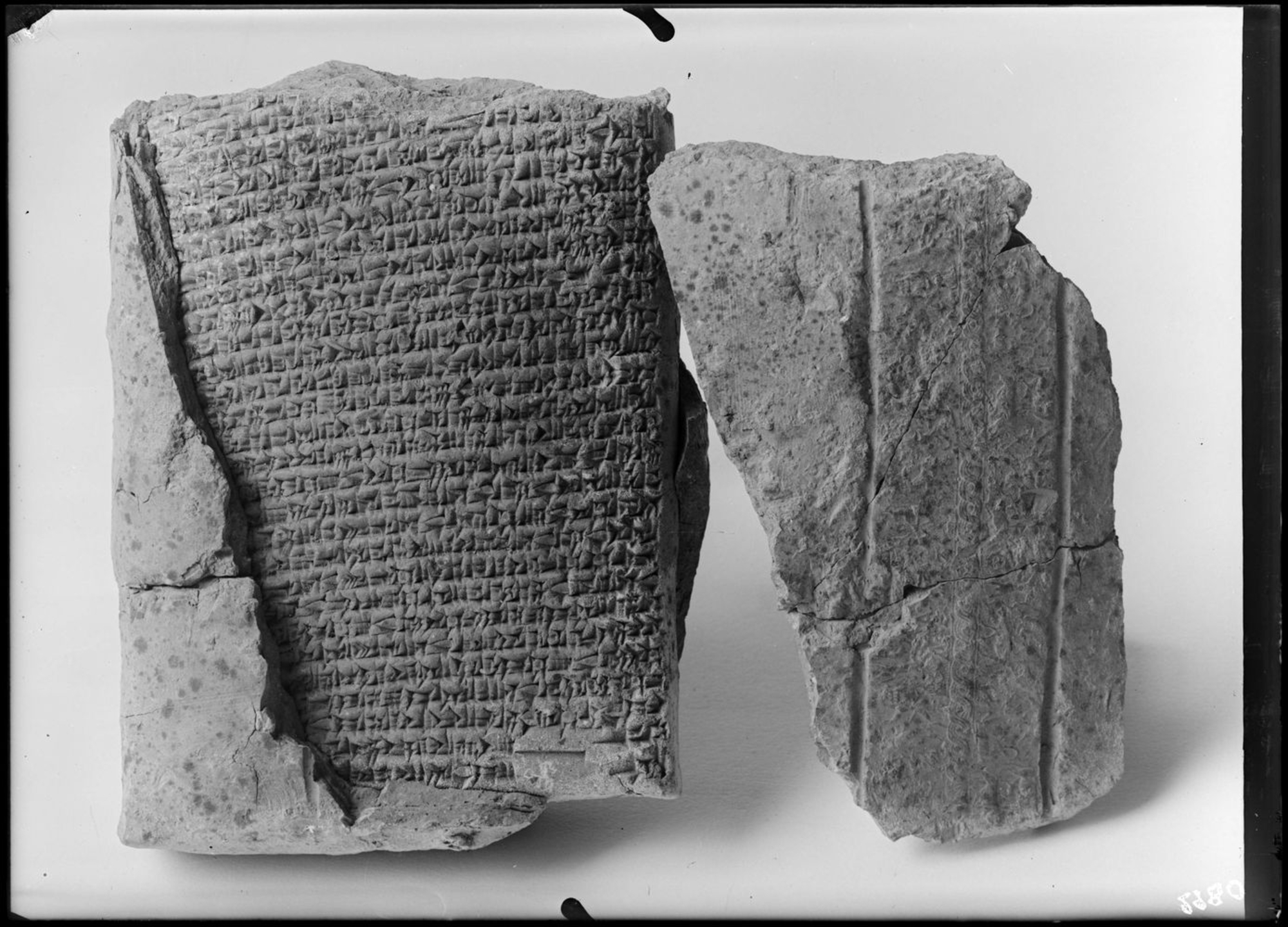
- Home
- The Great royal palace of Mari
- The palace: source of history
- Archives texts
The palace of Mari has provided a wealth of textual evidence crucial to understanding the history of the Near East in the early 2nd millennium.
The texts of the shakkanakkus
To start with, we have some 2,000 documents dated to the end of the shakkanakku period, around the 19th century BCE, named after the governors who were originally put in charge of Mari by the Akkadian dynasty between 2300 and 2200 BCE, but who became rulers in their own right. Most are administrative dockets, in large part relating to personnel rations, deliveries of animals, textiles, and the like.
The Amorite archives
The 15,000 texts in the Mari archives dating from the Amorite period, named after the Semitic people who settled and ruled throughout Mesopotamia at the turn of the 3rd and 2nd millennia BCE, are spread over about half a century.
This Amorite documentation includes a large body of administrative texts, providing a wealth of information on the functioning of the palace: the series of texts known as the "king's meals", naptan sharrim, for example, are grain store accounts, while other batches are important sources on religious worship, taxes, and so on.
The most remarkable texts, however, are found in the epistolary corpus: the extensive correspondence between the kings of Mari and the kingdom’s other rulers or governors. These letters shed light on the sedentary and nomadic lifestyles of the tribes that populated the land of Zimri-Lim. They also provide an insight into the highly eventful political and diplomatic landscape of the time. After appointing his son Yasmah-Addu to the throne, for example, King Samsi-Addu constantly urged him to behave like a genuine sovereign and to take care of the military and administrative affairs of the kingdom, instead of living a life of luxury.





